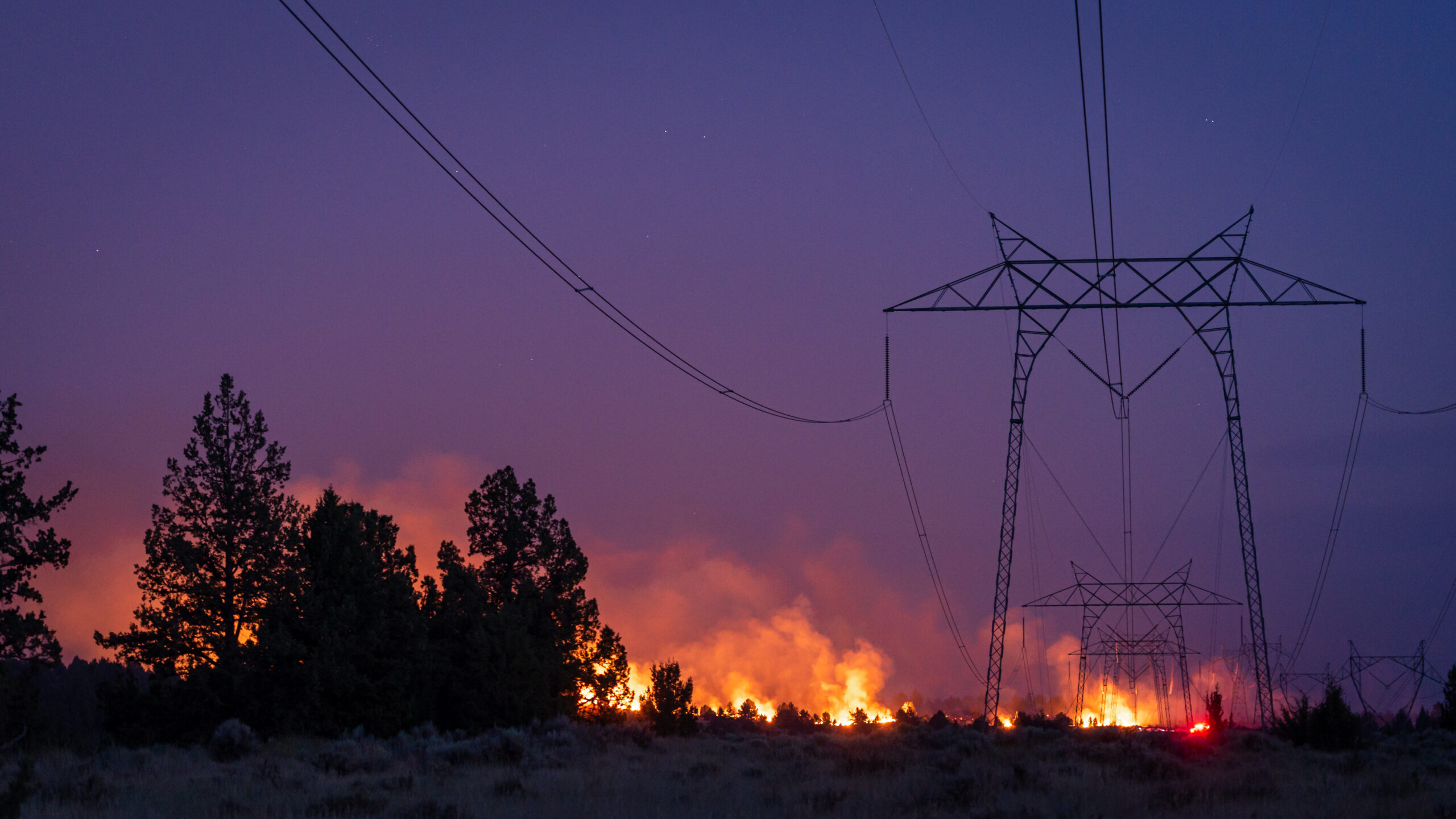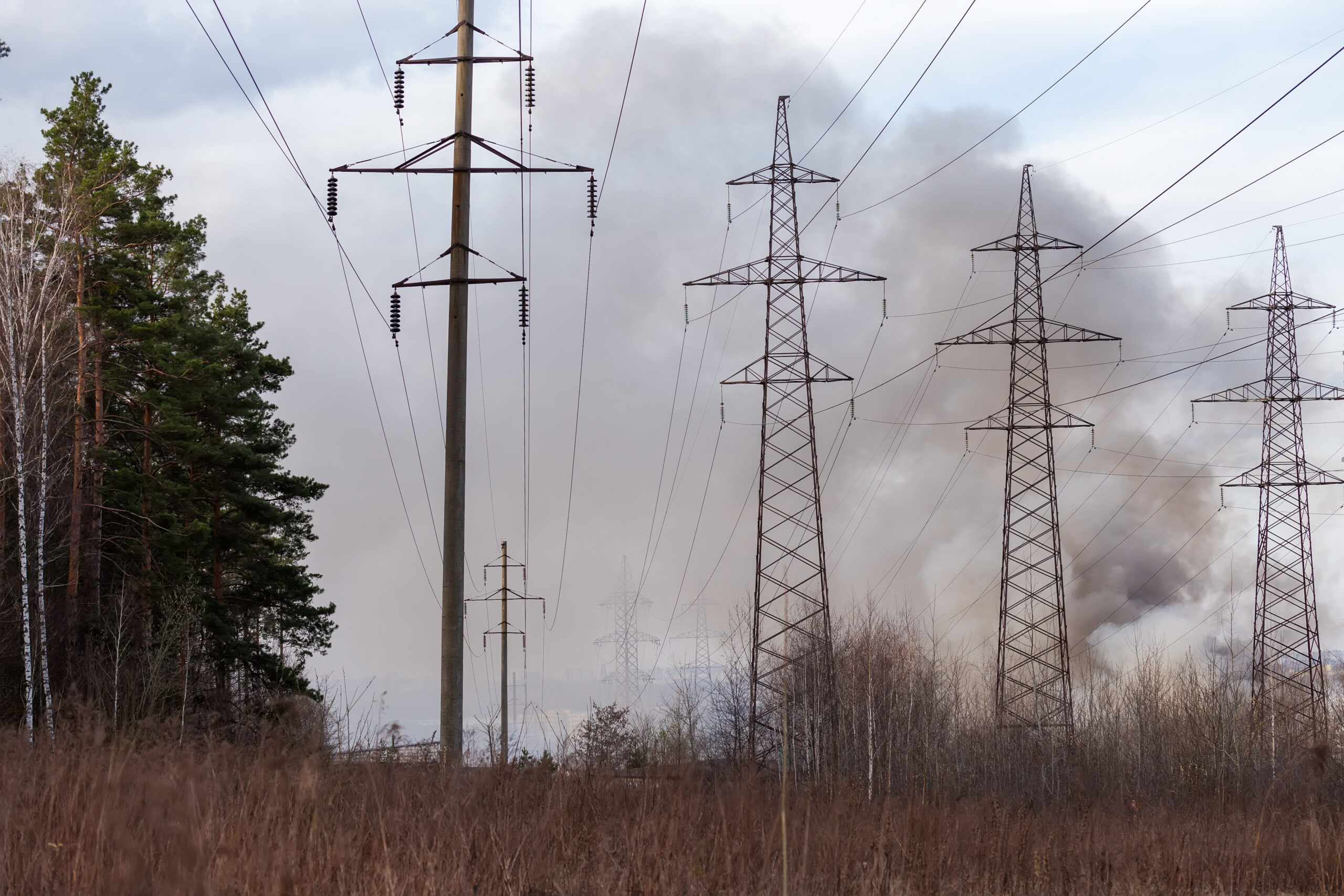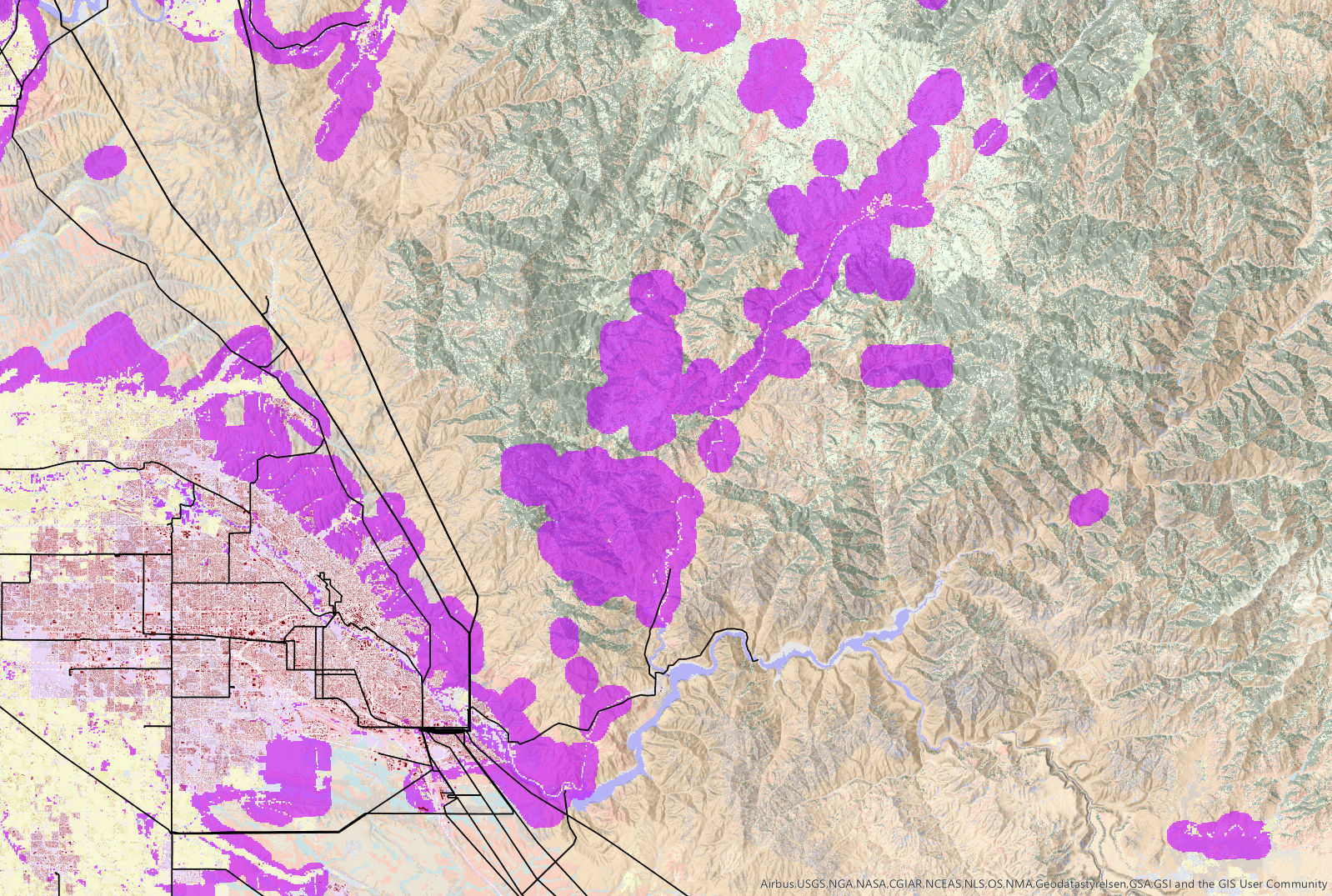Five strategies for a more resilient, adaptive and cost-effective approach to mitigation
Wildfire risk is no longer a seasonal concern relegated to a handful of states—it is a year-round, nationwide challenge that utilities across the United States must address with urgency and foresight. Recent catastrophic wildfires in Southern California and Hawaii have underscored the devastating impacts these events can have on communities, critical infrastructure and utility operations.
The stakes have never been higher for utility executives responsible for wildfire risk mitigation and vegetation management. The evolving regulatory landscape, increasing climate volatility and rising public expectations demand a new, integrated approach to wildfire mitigation.
Risk reduction, preparedness, mitigation and response require more than a collection of isolated tactics. Modern utility companies must develop a comprehensive, cohesive and continuously evolving strategy. Understanding the biggest challenges utilities face and the essential long-term strategies for mitigation can help build resilience in the face of growing wildfire threats.
Wildfire Risk Impacts Every Utility
Utilities today operate in an environment where wildfire risk is pervasive and complex. The recent wildfires in Southern California, the Paradise and Eaton fires, the devastating 2023 Maui wildfires in Hawaii, Canadian conflagrations and even recent rare fires in North Carolina have demonstrated that no region is immune and that the consequences of unmitigated risk can be catastrophic, both in terms of human safety and financial liability.
One of the most significant challenges facing utilities is budget constraints. Despite increasing investments in wildfire mitigation, utilities are facing a significant challenge in fire prevention. The costs associated with asset hardening, vegetation clearing, undergrounding, monitoring many thousands of miles of electrical transmission and distribution lines within a single utility’s service area are enormous. As a result, every dollar allocated to wildfire mitigation must be spent wisely, balancing trade-offs between risk assessment, plan implementation, grid hardening and operational improvements. Utilities must constantly evaluate how to distribute these resources to maximize risk reduction within a limited budget. Performing and reviewing a wildfire risk assessment helps utilities understand the scope of the challenge and enables them to consider how to distribute the most cost-effective mitigation actions to reduce risk of ignition, consequence of fire and response to fire.
Regulatory requirements add another layer of complexity. States like California and Oregon require utilities to develop, implement, and continuously improve fire mitigation plans demonstrating measurable improvements year after year. For utilities in states where such regulations are not yet in place, the pressure is mounting to develop robust mitigation strategies before mandates are legislated.
The rapidly expanding wildfire mitigation tools and technologies marketplace presents opportunities and challenges. Utilities are inundated with options, from advanced risk assessment platforms to sensors, cameras and digital twins. While these tools can be powerful, the sheer volume and variety can be overwhelming, making it difficult for utility executives to determine the most appropriate solutions for their unique risk profiles and operational realities.
Another persistent challenge is the lack of expertise in wildfire mitigation planning. Utilities may have plans in place that appear comprehensive but lack the sophistication or adaptability required to address evolving threats. Without a clear understanding of how their plans compare to industry best practices or regulatory benchmarks, utilities risk falling behind or missing critical opportunities for improvement.
Finally, the cross-functional nature of utility operations means that wildfire mitigation cannot be siloed within a single department. Effective strategies must span operations, engineering, vegetation management, substation design and situational awareness. Achieving this level of integration is a significant organizational challenge, particularly for utilities with legacy structures or limited experience in fire mitigation planning.
Wildfire challenges for utilities include:
- Limited budgets that require careful prioritization of mitigation investments.
- Evolving and rigorous regulatory requirements demand continuous improvement.
- An overwhelming array of tools and technologies complicates decision making.
- Lack of clarity and expertise for wildfire mitigation analysis and planning and benchmarking.
- Siloed methods and approaches that lack integrated understanding.
Five Strategies for Long-Term Wildfire Mitigation and Risk Reduction
1. Risk Assessment
A robust risk assessment is the cornerstone of any effective wildfire mitigation strategy. Utilities must begin by comprehensively evaluating the most vulnerable communities they serve —both in terms of exposure to external wildfire threats and the potential for utility-caused ignitions. This process involves geospatial analysis, historical ignition data, and integrating environmental variables such as wind, vegetation, topography and overall values at risk with asset condition information and associated ignition probabilities.
Utilities can prioritize mitigation efforts, allocate resources efficiently and communicate risk-based decisions to regulators and stakeholders by understanding the specific risks facing their service areas. A well-executed risk assessment is not a one-time event but an ongoing process that adapts to changing conditions and incorporates new data as it becomes available.
2. Grid Hardening
Grid hardening encompasses a suite of physical and operational measures designed to reduce the likelihood that utility infrastructure will ignite a wildfire or be damaged by one. Strategies include undergrounding lines in high-risk areas, installing covered conductors, implementing fast-trip settings and replacing vulnerable components such as wood poles with steel alternatives. While some measures, like undergrounding, offer significant risk reduction, they are often cost-prohibitive to implement system-wide.
Utilities must use risk assessment data to target grid-hardening investments where they will have the greatest impact. In many environments, such as Hawaii, the primary risks stem from grasslands and rangelands rather than forests, requiring a tailored approach to hardening and asset protection.
3. Situational Awareness and Operations
Situational awareness is critical for utilities to respond effectively to emerging wildfire threats. This can involve closely monitoring weather conditions in specific areas, deploying sensors and cameras that provide real-time data on grid conditions, environmental factors and potential ignition sources. Utilities must also develop and rehearse operational protocols, such as Public Safety Power Shutoff (PSPS) events, to ensure rapid and coordinated responses during high-risk periods.
With strong situational awareness, utilities can decide when to de-energize lines, dispatch crews, or alert emergency responders—based on real-time weather, moisture levels and fire modelling. This can involve closely monitoring weather conditions, vegetation moisture and modelling wildfire spread as conditions begin to develop that support rapid wildfire ignition and spread. It also requires the integration of other data streams into centralized dashboards and the continuous training of operational teams to interpret and act on this information quickly and accurately.
4. Community Engagement
Wildfire mitigation is not solely a technical challenge but also a social one. Utilities must engage proactively with the communities they serve, as well as with local governments, emergency responders and oversight bodies. Transparent communication about risk, mitigation measures and operational decisions—such as planned outages—builds trust and fosters cooperation.
Utilities should also encourage and reward community efforts to implement Firewise practices, such as creating defensible space and hardening homes. By aligning grid-hardening investments with community preparedness, utilities can amplify the effectiveness of their mitigation dollars and create a shared sense of responsibility for wildfire resilience.
5. Monitoring and Continuous Improvement
The most resilient utilities recognize that wildfire mitigation is a journey, not a destination. Continuous monitoring and evaluation of mitigation efforts are essential to ensure that strategies remain effective in changing conditions. This includes rerunning risk assessments frequently as wildfires can now occur throughout the year as opposed to historic fire seasons. This includes measuring the effectiveness of implemented measures, and updating plans based on lessons learned.
Regulatory frameworks increasingly require utilities to demonstrate ongoing improvement, making continuous evaluation a critical component of compliance as well as operational excellence. Utilities that embrace a culture of learning and adaptation will be best positioned to reduce risk over the long term.
By embracing these key strategies, utilities can achieve a more resilient, adaptive and cost-effective approach to wildfire mitigation, achieving significant results including:
- Reduced Liability Risk: Proactively addressing ignition sources and vulnerabilities minimizes the likelihood of catastrophic utility-caused wildfires and the associated financial liabilities.
- Enhanced Grid Reliability: Targeted investments in grid hardening and operational improvements help ensure that critical infrastructure remains operational during wildfire events and recovers quickly afterward.
- Improved Situational Awareness: Real-time monitoring and data integration enable faster, more informed responses to emerging threats, reducing the risk of uncontrolled fire spread.
- Stronger Community Trust and Collaboration: Transparent communication and stakeholder partnership foster public understanding and support for necessary mitigation measures, such as PSPS events.
- Continuous Regulatory Compliance: Ongoing evaluation and improvement ensure utilities meet and exceed evolving regulatory requirements, reducing the risk of penalties and reputational damage.

Partner with TRC to Achieve Effective Risk Reduction
At TRC, we understand that wildfire mitigation is not a one-size-fits-all challenge. Our approach is grounded in decades of experience across diverse utility environments, from California’s mature wildfire mitigation programs to emerging efforts in regions newly exposed to wildfire risk. We offer a cohesive, integrated suite of services that spans every aspect of wildfire mitigation—from risk assessment, monitoring and grid hardening to operational protocols, community engagement and continuous improvement.
What sets TRC apart is our ability to bridge silos and deliver integrated solutions that are both comprehensive and tailored to each client’s unique needs. We recognize that every dollar spent on mitigation must be justified, prioritized and aligned with the utility’s overall risk profile and operational goals. Our team brings together experts in wildfire GIS analysis, engineering, operations and stakeholder engagement to ensure that every mitigation plan is actionable, data-driven, effective and adaptable. We supply integrated services and strategic capabilities across the lifecycle of wildfire mitigation and response.
TRC’s clients benefit from our in-depth knowledge of regulatory requirements and industry best practices, as well as hands-on experience in implementing mitigation measures in complex environments. Our team partners with utilities to build the internal capabilities and organizational culture required for sustained resilience. Whether just beginning your wildfire mitigation journey or seeking to elevate an existing program, TRC offers the expertise, tools and collaborative approach needed to safeguard infrastructure, customers and communities.
Achieve New
Possibilities
Partner With TRC’s Tested Practitioners




